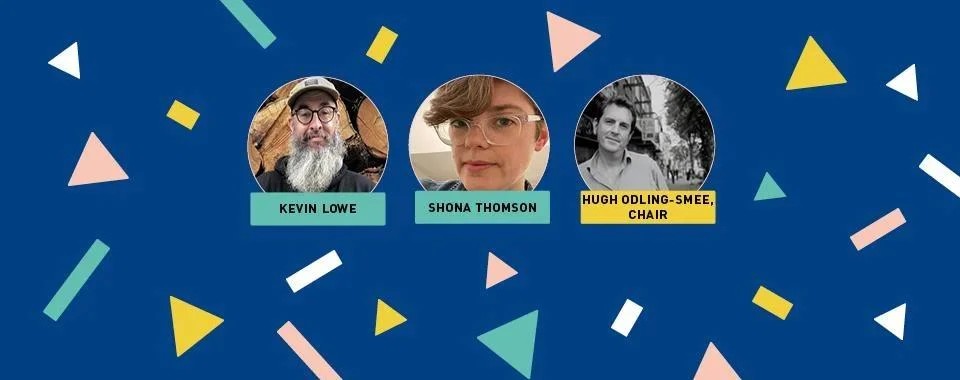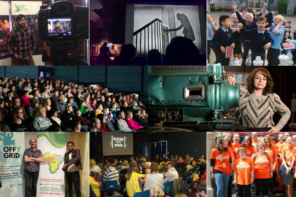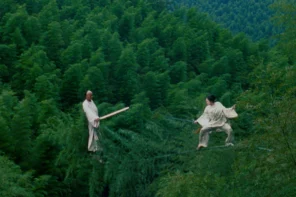From This Way Up 2022 at DCA Dundee, Camilla Baier writes for The Bigger Picture on the ‘Up From The Roots’ panel which looked at the value of cinemas in our neighbourhoods and the direct role that many exhibitors play in serving the local community.
During this year’s This Way Up conference I think the sentence I have heard the most – be it from the person sitting next to me in a session, in the line for lunch or coffee or the drinks reception in the gorgeous V&A – must have been “It’s so nice to get people together in a room again.” This simple but sweet sentiment was the thread that weaved its way through almost all of the sessions at TWU.
We heard many inspiring stories from so many stimulating speakers across the two days, and the final session really brought it home.
Hosted by Hugh Odling-Smee (Project Manager, Film Hub Northern Ireland) Up From the Roots welcomed Shona Thompson (Now Showing Network Coordinator, Regional Screen Scotland) and Kevin Lowe (Events Operative, Leigh Film Society) to share their insights on the importance of cinema’s relationship with community and how venues can best serve the people in their neighbourhoods.
Affordable, accessible and welcoming
To set the mood we were shown an uplifting short film that chronicled the story of how the Leigh Film Factory based in Greater Manchester, was devised, designed and built by a dedicated team of volunteers who set out to provide an affordable, accessible and welcoming space for everyone in their community to feel at home.
Kevin Lowe would later outline the collaborative spirit of the build; the division of labour according to skills (existing and purposefully acquired – Kevin even learned how to build a bar!) and the importance of this process to create a sense of ownership for the community. The Leigh Film Factory has been in operation as a full functioning 100 seat cinema since August 2022.
The Leigh Film Society has been using film screenings to bring people within their community together since its founding in 2013. While the planning of the bricks-and-mortar cinema had to come to a halt during covid, their dedicated team of volunteers continued their mission of using film to combat social isolation through their Orange Bags of Cinema Sunshine initiative where they delivered DVDs to vulnerable and/or isolated community members to make them feel connected.
Similarly, Shona Thompson spoke of her collaboration with the Coalfields Regeneration Trust, which is dedicated to improving the quality of life for the people living in former coal-mining communities (of which there are 88 in Scotland). Through her work with heritage and cinema, she got involved in a collaborative creative regeneration programme to explore and celebrate shared and personal narratives through film screenings. Fuelled by the belief that the coalfield communities have inspiring stories to tell that go beyond their coal-mining heritage they partnered up with filmmaker Anne Milne, who is developing innovative collective filmmaking techniques, and using those with archive film footage to give the people their voice back. In short, Shona made 16 films during Covid, which were posted online during the lockdown and have accumulated over 5,000 views.
While this is heartening, when Hugh asked whether people post-covid have recognised the benefits of community cinema, Shona points out that they have unquestionably recognised the importance of buildings. Buildings bring people together (N.B. Shout out to the tireless team behind the Save The Filmhouse campaign); and more specifically community centres, as in the case of Coalfields towns where people would traditionally congregate in Miner’s Welfare community halls.
Once reopened to the public and with the help of funding from Regional Screen Scotland, the CRT, their local collaborators and Shona have finally been able to show the films in their respective communities.
‘Community cinema is where it breaks out from just film and art’
Both these inspiring stories demonstrate community sentiment very clearly and show that the demand for community cinema is obviously there. However the question remains – how can we persuade the government and funders how vital these organisations and safe places are?
‘Share good news stories’, says Shona. Whether it’s on Facebook or the local newspapers, word of mouth is also so important to engage more local communities. ‘Community cinema is where it breaks out from just film and art,’ but you need to engage with the local authorities (which is not always easy) and collaboration with other organisations is key.
By the end of the session the panel and the audience may not have the decisive answer to the question of how to measure the value of community cinema, in a sector that so often measures worth by financial value, but the sense of the immeasurable worth of community connection lingered on as we reflected at the closing remarks, say our goodbyes at the farewell drinks and make our way back, reenergised, to our own communities.






